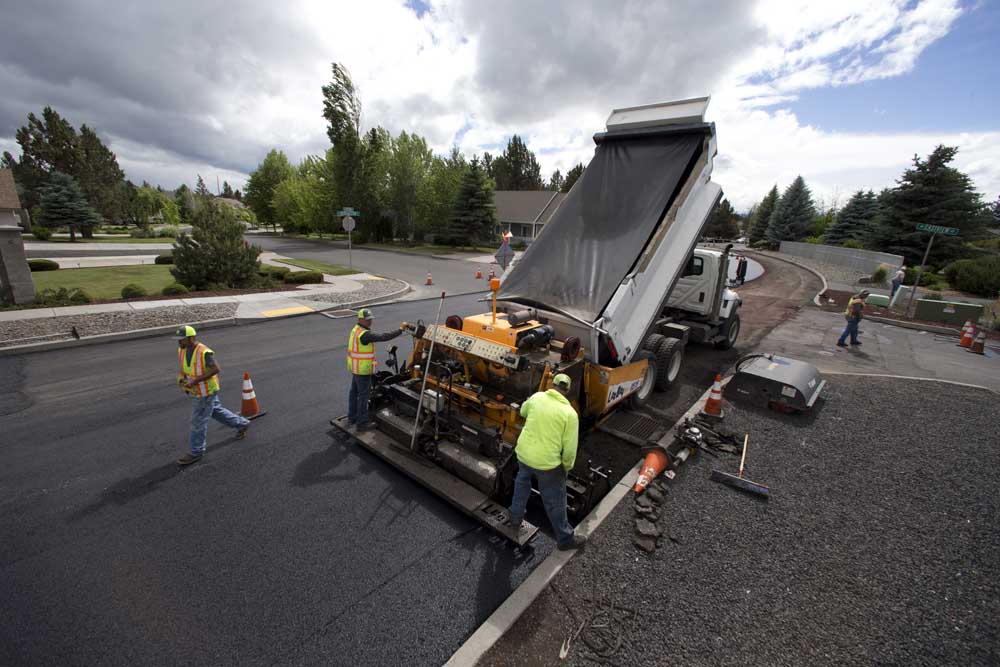Four wildlife overpasses planned for U.S. Highway 20 near Black Butte
Published 5:30 am Friday, August 16, 2024

- A buck uses the wildlife crossing at U.S. Highway 97 near S. Century Drive in this image from October 2016 captured by an Oregon Department of Transportation camera.
For wildlife migrating between the Cascade Range and areas of the High Desert, crossing U.S. Highway 20 is a hazard to life and limb.
Some make it safely across; others become roadkill.
A multimillion dollar project spearheaded by Central Oregon LandWatch seeks to change that dynamic by erecting several wildlife crossings that span the highway, allowing deer, elk and other animals to cross the highway safely. The target area to assist wildlife is a 35-mile stretch of Highway 20 between Bend and Suttle Lake.
On average, the Oregon Department of Transportation documents more than 6,000 vehicle collisions with deer and elk annually. Those strikes include approximately 350 to 600 mule deer and elk killed each year between Sisters and Suttle Lake, according to LandWatch, which would make this one of the highest densities of wildlife-vehicle collisions in the state.
The wildlife crossing project near Black Butte is part of a greater mission by environmental nonprofits and ODOT to protect wildlife and reduce crashes that cause vehicle damage and can result in injury or death to people and animals.
Wildlife crossings have proven to be successful in other parts of Central Oregon.
Three crossings are located near Lava Butte, an area that sees over 20,000 vehicles pass by each day, according to ODOT. Miles of fencing were erected on both sides of the highway to guide animals toward the crossings. The transit agency said the crossings near Lava Butte have helped cut collisions by 86%, saving human and animal lives. A crossing is also located near Gilchrist.
Four locations identified
A feasibility study identified 11 potential locations for wildlife crossing structures along the corridor between Bend and Suttle Lake. Four sites were chosen as top priorities, based on research conducted by two environmental consulting firms, River Design Group and Samara Group. Criteria for site selection included wildlife-vehicle collision density and value for migrating wildlife.
The upcoming phase includes raising $560,000, which goes toward design and engineering as well as a community engagement process.
Forested areas north and south of Sisters are considered an important wildlife transitory zone, especially for elk and deer, as they migrate between the Cascade Range to the west and sagebrush grasslands of the High Desert to the east.
Rachel Wheat, wildlife connectivity coordinator for the Oregon Department of Fish and Wildlife, describes the highway as a “formidable barrier” for animals as they migrate between these zones.
The priority locations are at milepost 94.6, milepost 94, milepost 92, and milepost 90. All four of the crossing types are over-the-road spans, which is new in Deschutes County as existing crossings on U.S. Highway 97 go under the road. LandWatch says the other seven locations will be completed when funding and opportunities allow.
Jeremy Austin, wild lands and water program director for Central Oregon LandWatch, described the project as a “tremendous opportunity” in Oregon to increase the number of wildlife crossings for animals and improve safety for motorists.
“This area is one of the high priorities we have in the state,” Austin said.
$50 million price tag
The four crossings are anticipated to cost $50 million. Some of the funding could come from the 2021 $1.2 trillion Bipartisan Infrastructure Law, which specifically includes $350 million for wildlife crossings.
The project is unique because of its scale. In the past, Central Oregon has seen wildlife crossings established one at a time as funding allowed and projects could coincide with highway improvements and widening work. This time, the four crossings are planned to be built simultaneously, which officials say is more effective in helping wildlife because it allows better connectivity across a wider wildlife habitat.
“Single projects are great, but we need to have a corridor approach to really get at protecting migration corridors over long distances, said Cidney Bowman, wildlife passage coordinator for ODOT. “Feasibility studies allow us to take a corridor approach to planning efforts, gives us time to raise the funds necessary to design and build structures, and include wildlife passage into ODOT project development processes.”
Bowman adds that this project will help Oregon catch up with similar initiatives in other states. The world’s largest wildlife crossing is currently under construction outside Los Angeles, set to be finished in 2026. And in Washington, several large wildlife crossings have been erected around the state, including the world’s current largest crossing on Interstate 90.
“Our neighbors around the West are far ahead of ODOT when it comes to reducing the number of wildlife-vehicle collisions and getting animals safely across the highway,” said Bowman. “Their success has shown us how these projects can increase safety for the traveling public and maintain habitat connectivity for wildlife.”
Wildlife crashes declined during pandemic, but Central Oregon remains hotspot








